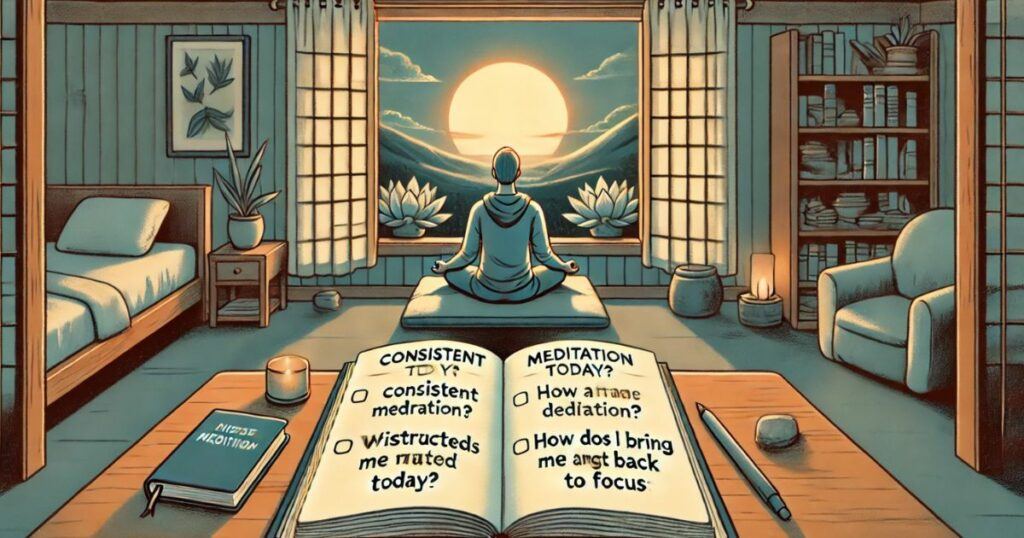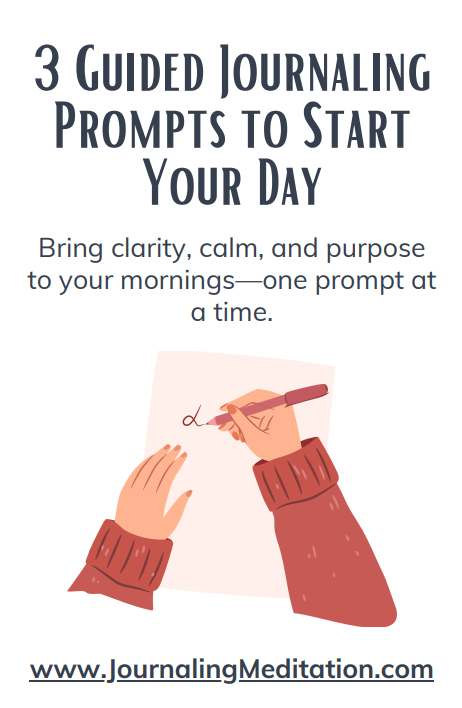
Meditation is a powerful tool for mental clarity and emotional well-being. But first, learning how to deal with distractions during meditation can be a significant challenge. Whether it’s a wandering mind, an uncomfortable body part, or external noises, distractions can get in the way of your practice and make it difficult to reach a state of deep relaxation and focus. Here, we’ll explore useful strategies to help overcome these distractions and get the most out of your practice.
Distractions in Meditation
What Are Distractions?
When it comes to meditation, there are really only two types of distractions. Internal distractions include those thoughts, emotions, and physical sensations that can pop up out of nowhere. Your mind may wander to your obligations, a recent interaction, or regular concerns you may have. Feelings like anxiety or excitement can also draw your focus away. And physical discomfort, such as itching or stiffness, can also be a distraction as well.
External distractions are factors outside your body that can interfere with your attention. These can include noises like traffic, people talking/yelling/working, or even the annoying clank of household appliances. Environmental conditions such as temperature or light can also affect your ability to concentrate.
Why Do Distractions Occur?
Distractions are simply a part of the meditation process. The mind has a natural tendency to wander, and meditation can bring unresolved thoughts and feelings to the surface. Understanding that sometimes distractions are normal and learning to accept them can help you develop a more compassionate approach to dealing with them.
Preparing for a Distraction-Free Meditation
Creating the Right Environment
- Choose a quiet space: Find a place where you won’t be interrupted. The corner of a bedroom or study may work.
- Comfortable seating: Use a cushion, chair, or bench that suits you. Comfort helps minimize distractions.
- Calming elements: Include scents like lavender or sandalwood and ambient sounds like nature recordings to encourage a calming environment.
Setting Intentions
- Importance: An intention acts as a mental anchor, guiding your practice. Having that intention can help cope with a distraction and bring your attention back to your practice.
- Examples: Stay present, cultivate patience, or observe thoughts without judgment.

Techniques to Manage Internal Distractions
Mindfulness and Awareness
Mindfulness is the awareness of your thoughts, feelings, bodily sensations, and surrounding environment. Practicing an unattached awareness can help you notice and acknowledge thoughts and distractions without getting caught up in them. When you notice your mind wandering, gently bring your focus back to your breath. Over time, this practice can help you with your ability to remain present.
Labeling Thoughts
Another overlooked but effective practice is labeling your thoughts. When a thought pops in your head, decide what type of thought is—a memory, a plan, a worry, or something else. By labeling the thought, you can distance from it, which can reduce its power to distract you. For example, if you notice yourself thinking about your grocery list, you can label it “to-do” and then gently return your attention to your breath.
Body Scan Meditation
Body scan meditation focuses on different parts of your body, one at a time, and just observing any sensations. This technique helps ground you in the present moment and can help reduce physical distractions. Start at the top of your head and slowly work your way down to your toes, noticing any tension, tingling, or discomfort. Acknowledge these sensations without calling them good or bad and continue the scan.
Techniques to Manage External Distractions
Using White Noise or Music
- Masking disruptive sounds: Use white noise or calming music to create a serene environment. This can help cover up unwanted external noises.
- Apps and devices: Check out options for sounds such as ocean waves, rainforest sounds, or instrumental music. YouTube is a great free resource.
Dealing with Environmental Factors
- Manage noise: Consider earplugs or noise-canceling headphones if noises are too disruptive. Perhaps another time slot would be more conducive for your practice.
- Communicate schedule: Let others know of your meditation time to avoid interruptions.
- Adjust surroundings: Control temperature, lighting and all around comfort to get the most out of you session. A private spot under your control would be ideal.

Advanced Strategies for Persistent Distractions
Visualization Techniques
Visualization can be extremely useful for. improving focus during meditation. Guided visualization involves imagining a peaceful scene or scenario in detail. This technique can help you create a mental sanctuary where external distractions are less likely to have an impact. For example, you might visualize a serene beach, a quiet forest, or along a peaceful stream. Focus on the sights, sounds, and sensations of this place and feel like you are really there.
Breathing Exercises
Breathing exercises are another great strategy for dealing with distractions. Techniques such as the 4-7-8 breathing method can help calm your mind and body. To practice this, inhale for a count of four, hold your breath for seven counts, and exhale for eight counts. This exercise helps regulate your nervous system and can make it easier to stay focused during meditation.
Incorporating Movement
- Prepare mind and body: Engage in gentle yoga or tai chi before meditating. Again, YouTube can be a great resource
- Release tension: Physical movement can enhance your ability to stay centered. A short walk can get things gently moving.
- Simple stretches: Even a few minutes of stretching can help. This can help get blood flowing, carrying oxygen to all parts of your self.
Building a Consistent Practice
Establishing a Routine
Consistency is one of the most critical factors to overcoming distractions during meditation. Creating a regular meditation routine can help train your mind to settle more quickly. Choose a time of day that works best for you and stick to it as much as possible. Whether it’s first thing in the morning, during lunch break, or before bed, regular practice will make it easier to manage distractions.
Journaling Post-Meditation
Journaling after meditation can help you process and reflect on your experience. Write down any distractions you noticed, how you dealt with them, and any insights you gained. This practice can help you identify patterns and make adjustments to the way you approach your practice. Consider using prompts such as “What distracted me today?” or “How did I bring myself back to focus?”

FAQ: Overcoming Distractions During Meditation
Dealing with distractions is a common obstacle for anyone practicing meditation. Here are some frequently asked questions to help address common issues and maybe provide useful solutions.
How to stop distractions while meditating?
You will never truly stop distractions from happening. But what you can do is create a conducive environment by ensuring your meditation space is as quiet and comfortable as possible. Using white noise or calming music can help cover up disruptive external sounds. Also, setting your intentions before starting your meditation can become a mental anchor, helping you to remember to return to your breath whenever distractions arise.
What to do if you can’t focus on meditation?
If you can’t focus on meditation, practice mindfulness by gently acknowledging the distraction and bringing your focus back to your breath. Starting with shorter meditation sessions and gradually increasing the time can also help improve your concentration. Incorporating breathing exercises, such as the 4-7-8 method, can further calm your mind and facilitate concentration.
How do I stop unwanted thoughts while meditating?
You will never stop unwanted thoughts. But you can mitigate them. Try labeling your thoughts. Mentally note the type of thought (memory, worry) and this can help you let it go. Maybe use body scan meditation, This can help ground you in the present moment and reduce mental distractions. Or try to accept and release the thought without judgment, gently returning your attention to your breath or mantra.
How do you focus on an object while meditating?
Choosing a focal point, such as a candle flame, a flower, or a picture. Maintain a soft and relaxed gaze on the object without straining your eyes. Whenever your mind wanders, gently bring your attention back to the chosen focal point to maintain concentration.
Why can’t I stop thinking while meditating?
Thinking during meditation is natural and common. Practicing patience with yourself and consistency in your practice can help reduce the frequency of distracting thoughts over time. Using a mantra by repeating a word or phrase can also provide a mental anchor and help quiet the mind.
Conclusion
Dealing with distractions during meditation is more than a common challenge. It is the very exercise you need to build your mental muscle. But with the right strategies, it can be managed and used effectively. From creating the right environment and setting intentions to using advanced techniques like visualization and breathing exercises, there are many ways to improve your focus and practice. Remember, consistency is key, and journaling can provide valuable insights into your journey. Keep experimenting with different methods, and be patient with yourself. Distractions are a natural part of the process, and each meditation session is an opportunity to learn and grow.
What techniques have you found most effective in dealing with distractions during meditation? Please share your experiences and thoughts in the comments!





